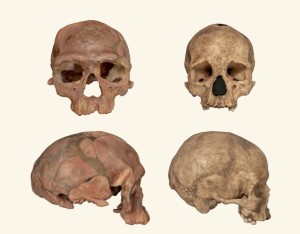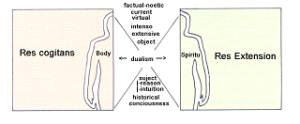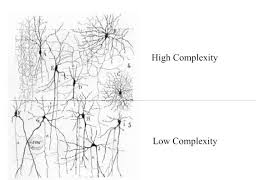
Arquivo para a ‘Calm Technology’ Categoria
Between public and private: transparency
The term seems a slogan of political propaganda, and in fact it may be, the idea that everything can be revealed and the control of apparatus, especially presidential, about what can and should be disclosed can contrary to what many announce, be strengthening services The disappearance of privacy, the collapse of trust, and crucial aspects of maintaining democracy and economic control.
can be revealed and the control of apparatus, especially presidential, about what can and should be disclosed can contrary to what many announce, be strengthening services The disappearance of privacy, the collapse of trust, and crucial aspects of maintaining democracy and economic control.
Byung-Chul Han’s book is a denunciation that the ideal of transparency can be as false as the worst utopias and modern mythologies: mistrust of everyone and lack of privacy by a “homogenization” of the interpretation of the facts.
Anyone with suitable instruments can get information on almost any subject, provided they have instruments and often economic strength to do so, and this already reveals one of the possible manipulations.
Powerful groups, dangerous groups and mainly malicious politicians can use the information available to make inappropriate use of the information available.
After publishing The Society of Toughness and The Agony of Eros by the German-Korean philosopher Byung-Chul Han, he enters another crop.
Transparency Society is a translation of Miguel Serras Pereira direct from the German text Transparenzgesellschaft, originally from Byung-Chul Han. In Portugal, the book was published in September 2014, in the collection Antropos, by the newspaper Relógio D’Água.
Byung-Chul Han denounces in this book: “The Transparency Society” (Lisbon, Editora Espelho d’Agua, 2014) is that total transparency is a false ideal, and according to the strongest and most dangerous author of contemporary mythologies, reveals his naivety and Strangeness “when he arrived in Germany: Philosophy knew nothing. I knew who Husserl and Heidegger were when I arrived in Heidelberg “(HAN, 2015).
He criticizes what he calls “transparency is devoid of transcendence” (ibid., P. 59): “Positive society avoids any kind of play of negativity, since it holds communication. Its value is measured exclusively in terms of quantity and speed of information exchange. The mass of communication also increases its economic value. Negative verdicts cloud communication (HAN, 2015).
What remedy, there is information that should remain private, but which? Who will control them? These are the questions that must be answered.
Han, B.C. The Transparency Society. CA: Stanford Briefs (first , 2015.
Lost or new homo sapiens?
In a paper published in Nature on June 7, a new skeleton of a humanid, the fact of being a homo sapiens is controversial, suggests that a race of humanoids lived in North Africa, where it is Morocco, for more than 315 thousand years ago.
a homo sapiens is controversial, suggests that a race of humanoids lived in North Africa, where it is Morocco, for more than 315 thousand years ago.
This changes the earlier conception dating from about claimed the emergence about 100 thousand years ago, measurements were made by laser equipment at various institutes in Europe, including Germany, where the study at the Max Planck Institute originated.
Jean-Jacques Hublin, author of the Nature paper and managing director of the Institute for Evolutionary Anthropology in Leipzig, explained: “Until now, the common knowledge was that our species probably arose, rather quickly, somewhere in the ‘Garden of Eden’. Probably in sub-Saharan Africa, “but now he added:” I would say that the Garden of Eden in Africa is probably Africa – and it is a large, large garden, “indicating a more extensive area for the emergence of man.
Hublin visited the Jebel Irhoud archaeological site for the first time in the 1990s, but had no time or money to dig up until 2004, having joined the Max Planck Society Society, rented a tractor to remove about 200 cubic meters of rock Which blocked access to the deeper part of the site.
Initially, one led by archaeological scientist Daniel Richter and archaeologist Shannon McPherron, also at the Max Planck Institute for Evolutionary Anthropology, dated the site and all human remains found between 280,000 and 350,000 years using two different methods, but then other countries also made measurements Using methods with laser use and the approximate date is 315 thousand years.
Hublin says his team tried and failed to get DNA from the bones of Jebel Irhoud.
This genomic analysis could have clearly established if the remains live in the lineage that leads to modern humans, but everything indicates that it may be a link more than humanoids clearly identified with the human race, and may be the missing link between us and the early primates.
Crisis, ontology and kenosis
Having developed the idea of the crisis in a deeper perspective, and using the method of deca-dialectical of Mario Ferreira dos Santos, it is possible to search for a way for: “abstraction of one of the opposites, whose positivity is now denied or reduced to another.” (SANTOS, 2017, p.75)
deca-dialectical of Mario Ferreira dos Santos, it is possible to search for a way for: “abstraction of one of the opposites, whose positivity is now denied or reduced to another.” (SANTOS, 2017, p.75)
It is also necessary, as the philosopher points out in his method: “we are saved from skepticism and dogmatism, which are two positions of crisis on the gnosiological possibility of man.” (page 79)
We want to go beyond thinking to point out the overcoming of the crisis, not that the thinking in essence of Mario Ferreira is not enough in essence, but an update is necessary, to overcome what he calls crisis thinking, to structure a philosophy of crisis: “And, consequently, of having a critical view of the crisis of finite existence.” (Idem)
The essential difference is that Mário Ferreira goes to a path of synthesis which he calls Concrete Philosophy, which points in the book in several sections as a complementary reading to understand his thinking, what is proposed here is a radical ontological revival.
Thus he proposes, in addition to the ontology, Kenosis, according to Valodomer Koubetch, “Kenose: Kenosis, kenotic, kenoo, to empty, to extenuate, to reduce to nothing; State of humiliation, “and this is necessary because we must admit that we do not have the answer ready, we do not have the discourse or if we prefer the single narrative for crisis thinking, and we rely on the help given by the Brazilian philosopher to speak in the Philosophy of Crisis , Identifying it in essence.
One can then enumerate output as a trinitarian ontology, if there is a tension between opposing poles of discourses described in deca dialectical, one can think of a logic of the Other, the non-self, or radically of the kenotic emptiness where it can emerge in the double emptiness , a third state.
The comparison with the trinity is inevitable, since in the theological discourse the reality of Jesus Christ, Son / Word of God, who, being God, the Second Person of the Trinity, annihilated, humbled and assumed the human condition, made his kenosis, Opening a new reality.
The discourse of dialogue, dialogism and polyphony can be exhausted, but all are not enough if there is no possibility in the opposing tensions of opening a Kenosis, if done by two speeches or two convicted persons, a third non- You as a trinitarian ontology, an overcoming of dualism, not without tension or without contradiction, but new.
SANTOS, Mario Ferreira. Filosofia da Crise, 1ª. ed. São Paulo: É Realizações, 2017
Dualism e ontologie
If everything in the world is relational, if, as the philosopher Mário Ferreira dos Santos says, “we do not say everything of one thing, not much, when we only classify it into a concept, for we know that in the thing there is much more that Is not of the concept that indicates it “(page 56)
Santos says, “we do not say everything of one thing, not much, when we only classify it into a concept, for we know that in the thing there is much more that Is not of the concept that indicates it “(page 56)
Therefore to see ontologically means to see the relation between the various aspects of being and the relation between beings, what Mário Ferreira will call the deca-dialectical, ten fields of analysis of the dialectic, among which we find the idealistic opposition between subject x object, “and In the subject the field of reason and intuition ” (page 64)
The philosopher’s unique way is to break the dualism from within, that is, not to refute it, but to include it then establishes “a factual-noetic scheme of the thing: which is a representation, with an image, a sensible scheme Thing is; or rather, of what the thing symbolizes in sensible schemes. The abstract-noetic scheme, constructed by reason, is the concept “(page 64).
Always considering contradictions, “the third and fourth fields of rational ignorance and knowledge, which operate in the abstraction of abstract schemas, which, at the same time, imply those that are despised, inhibited, that is, that of updating and rational virtualization And that of intuitive updating and virtualization. “(Idem)
He makes a fundamental statement for the present (he died in 1968): “The object, not being fully grasped by us, can be considered as actuality and virtuality” (page 65)
So actuality and virtuality are fields of tension of the object, says the philosopher.
Of these fields “a being can only update what is in its form. Other possibilities may only be closer if they undergo a substantial mutation, as we shall see below. “
It is precisely in this field that the three new fields emerge: seventh, eighth, and ninth fields, where they analyze the intense and extensive aspects that arise from the tension of the object.
The quantitative is always extensive to the object, while the qualitative is intensive, and using an analogy, states that the quality is vertical, while the extensivity is horizontal, exemplifies with the green color quality, “green is greener or less green, taking As a perfect green measure, although without current possession by us, but only virtual. “(Idem)
Mechanism, he explains, is precisely the reduction of intensities to extension, in this case Mario Ferreira deduces: “there is no solution of the open crisis between these antinomies, because the reduction is abstract means of escaping it, and not understanding it dialectically,” In this case deca-dialectically.
‘The tenth field, of great importance in examining the facts, is that of the variant and the invariant’ (page 67), which is the awareness we must have of historicity, although Mario Ferreira does not refer to Gadamer, probably did not even know his Work for the year that he died, makes his analysis based on Einstein’s relativity.
Epistemology and the humanities
From the middle of the nineteenth century until the beginning of the twentieth  century, the human sciences lived a real transformation in the search for an alternative to the epistemological foundations of scientific knowledge, since the old “positivist” and “naturalist” models were in check.
century, the human sciences lived a real transformation in the search for an alternative to the epistemological foundations of scientific knowledge, since the old “positivist” and “naturalist” models were in check.
Dilthey, Schleiermacher’s successor who proposed the hermeneutic method, sought philosophical foundations for an epistemology of scientific knowledge, thus said: “The sciences that have the socio-historical reality as their object of study seek, more intensely than before, the systematic relations between They and their foundations.” (DILTHEY 1989, p.59).
Gadamer will differentiate parity with the natural sciences with the human sciences (Geistewissenchaften), proposing that what occurs with an artistic interpretation, is different from reading, because “Reading, distinct from a ‘recital’, does not stand for itself Same; It is not an autonomous update of a thought pattern but remains subordinate to the text restored by the reading process. “(GADAMER, 2012, p.11).
The ideal model is romantic, as called by Gadamer, and deals with consequences for epistemology, for “Its ideal is to decode the Book of History. This is the method by which Dilthey hopes can justify self-understanding of the interpretive sciences and their scientific objectivity. “(Idem)
Just as texts have a “pure sense,” so history would have it, in Gadamer’s analysis, however, “their self-understanding of the sciences is not” truly consonant with their fundamental position in terms of Lebesphilosophie.” (Life) (GADAMER, 2012, p.12).
It clarifies that it is always “in the connection between ‘life’, which always implies consciousness and reflexivity (Besinung), and ‘science’, which develops from life as one of its possibilities” (idem).
Thus, the clear epistemological implication: “The human sciences thus acquire a ” ethical ” valence that could not remain without consequences for their methodological self-understanding.” (Idem)
Thus the human sciences “are closer to human self-understanding than the natural sciences. The objectivity of the latter is no longer an ideal of unequivocal and binding knowledge. “(Idem).
He will seek in Nicomachus ‘Ethics the lost foundations, when in the sixth book Aristotle distinguishes: “From theoretical and technical knowledge the mode of practical knowledge he expresses, in my view, one of the greatest truths that allow Greek thought to bring to light the’ Mystification ‘of modern society in which specialization reigns. “(GADAMER, 2012, page 13).
References:
DILTHEY, W. Introduction to the Human Sciences. Ed. By R. A. Makkreel & F. Rodi; Trad. Michael Neville. New Jersey: Princeton University Press, 1989.
GADAMER, H.G. The problem of historical consciousness, (Brazilian edition) 3rd. Edition, 3rd. Reprint, Rio de Janeiro: Fundação Getúlio Vargas, 2012.
Chinese revolution solar panel
Two Chinese universities have created, according to the EFE agency, solar panels that run with rain or fog, even at night time, the news was published in the official Chinese newspaper Diário do Povo.
run with rain or fog, even at night time, the news was published in the official Chinese newspaper Diário do Povo.
According to Professor Tang Qunwei of the Oceanic University of China, the main responsible for the project: “The goal is to increase the efficiency of converting direct light until it returns to have more, generating enough energy in low light conditions such as rain, fog , Mist or at night. “
The team at Yunnan Pedagogical University, the project’s partner, the panels may represent a “photovoltaic revolution”, a principle used in all solar panels, but the difference of this project is the use of a league called LPP Long persistence), which stores energy during the day and is used to produce the photovoltaic effect at night, allowing it to continue charging the energy.
Of course, only light can be absorbed and transformed into energy, but LPP stores energy and unabsorbed light is close to infrared, according to Professor Tang: “allowing for continuous day and night power generation,” Revolution is evident.
The advances have already been published in scientific journals from the United States and Europe, which highlighted the fall in energy costs, as well as producing “clean”
The hermeneutic ethics
If romantic ethics deviated little from the modern model that is fixed in the interpretation within the context and cultural appropriation, we have already said that alterity and more than this the understanding of the Other (we have already explained the capital), is something that promises to put incessantly Dialogue, relativizing methods that imply putting the correct one-sided.
within the context and cultural appropriation, we have already said that alterity and more than this the understanding of the Other (we have already explained the capital), is something that promises to put incessantly Dialogue, relativizing methods that imply putting the correct one-sided.
The word we use without explaining Verstehen (“to understand”) in German already expresses this: being in someone’s place (für jemanden stehen), addressing others and speaking for others, it would be said using.
We hope that it has become clear that neither will consciousness be possible in the sense of a full identification with itself, and also in the historical sense, nor the reach of an absolute truth, without a concrete opening to the Other, from this comes an “ethics”.
These limits are also in the idea of fineness defended by hermeneutics: no one can fully know himself, let alone the other, but open to the infinite.
The “hermeneutic ethics of dialogue” comes from a development of the idea of practical wisdom present in the three Aristotelian ethics, in the form of practical rationality (phronesis), which in reality is a Platonic concept, and we know that Aristotle was one of his disciples .
The theses that Plato developed revolved around the idea of ”good” (ἀγαθόν), but not as the basis of an ontological perspective, but as a question for the ethical in the proper sense, while Aristotle had the greater intention of criticizing the theory of ideas , In addition to providing a basis for his theory of phronesis, that is, to concretize this ethics in human status. Its ethics Nicomaqua is already ontological, where it put the modes of behavior (ἦθος), with rules depended on the mutability and limitation of the human being and the way of being human behaves, so it must be established in its variable mode of listening to another attack , So language and dialogue need to be appropriate and respected.
In Gadamer, theory is not in opposition to practical activity, for both are put in a presentification of praxis, the highest mode of being of the human being, gives as proof that we are absorbed (aufgehen) by something, as we linger (verweilen) Observing it and feel certain “pride”, but this is emptied soon if there is not the reflective act of life.
He will state this very clearly: “hermeneutical knowledge must refuse an objectivist style of knowledge … But ethical knowledge, as Aristotle describes us, is not an” objective “knowledge either. Here again, knowledge, not simply in front of something, must be verified; Knowledge is in advance involved and invested by its “object”, that is, by what it has to do. “(Page 49)
But it makes a profound difference with technical knowledge, when he states: “No one can ignore that there are radical differences between ethical knowledge and technical knowledge. It is evident that man does not dispose of himself as the artisan disposes of his material “(page 51)
What Gadamer will call ethical knowledge, and makes it supported in is far from that Hegelian “know-for-itself”, because “precisely in that” perfect application “that unfolds as” knowing “within a given situation” (pag. 55), just as “the just signifies the opposite not of error or delusion, but of blindness” (idem), and it is precisely this blindness that “loses control of itself and, dominated by the dialectic of passions, More oriented towards the good. “(Idem).
Thus, it will almost define ethics, hermeneutics is a dynamic process unrelated to definitions, will say that ethical knowledge: “opposes precisely to a purely technical knowledge. Thus, there is no longer any sense in distinguishing between knowledge and experience … an absolutely primordial form of experience, in relation to which all other experiences may be secondary, not original. “(P.55)
GADAMER, H.G. The issue of historical consciousness, 3rd. Editing by FGV SP, 2006 (pages is brazilian edition).
Nature of nature
We have already had occasion to speak of Edgar Morin’s method, in essence its complexity, but we want to penetrate the core of what his thinking confronts with modernity: what we call nature.
but we want to penetrate the core of what his thinking confronts with modernity: what we call nature.
We have already called nature the domain of man over it, anthropocentrism judges that the next man is nature, although part of it, the question is what nature is.
In Method I: Nature’s Nature, Morin states: “The inclusion of antagonism at the heart of complex unity is undoubtedly the most serious attempt against the paradigm of simplicity, the most evident call for the elaboration of a principle and a method of Complexity “(Morin 1997, page 140).
The problem of unity is that antagonism can not be eliminated, so simplicity is dumb, as Morin develops: “there is no organization that does not determine, at least on a virtual basis, internal antagonisms; The more complex organizations behave antagonistic games even in their principle and activity “(ibid., P.140).
Phenomenology begins, as it affirms that things are only things, what it affirms in the meantime is: “it is henceforth impossible to close the wealth of systems in simple and closed notions”, contradicting the simplism and reductionism of modernity.
The complexity states it (in italics in the original): “therefore arises in the bosom of the one at the same time as: relativity, relationality, diversity, alterity, ambiguity, uncertainty, antagonism, and the union of these notions that are… Complementary, competing and antagonistic “(Morin 1997, page 141).
And it uncovers the mystery of our notion of nature: “objects and concepts lose their Aristotelian and Cartesian virtues: substantiality, clarity, distinction … But these virtues were vices of simplification and denaturation” (Morin 1997: 141).
So what nature is, we must read the whole book and its complexity, and it is not evasive, but I leave a tip from the top of the book: “The noological sphere, constituted by the set of phenomena said spiritual, is a very rich universe that Ideologies can remain in latency or deviation, in a small minority isolation … but suddenly, the rupture of a negative feedback, or any other favorable event, allows its epidemic multiplication “( Morin, 1997, page 310).
It is not a conclusion, just a score from this post: “The imaginary is at the active and organizational heart of social and political reality” (Morin 1997, page 311).
Then develop the information universe, which interests us thematically.
MORIN, E. O Metodo: I-A natureza da natureza, Lisboa: Publicações Euro-américa, 1997. (Download em english)
The Nature in Spinoza
Baruch de Spinoza (or Espinosa as some want) (1632-1677) was a Dutch philosopher of  Portuguese descent (not Portuguese as others want).
Portuguese descent (not Portuguese as others want).
He said that everything is governed by a necessity of absolute logic, that nothing happens by chance in the physical world, so everything that happens is a manifestation of the immutable nature of God, therefore it is God’s will, despite being excommunicated by Jews and Christians .
But the main reason for his excommunication was a kind of pantheism, although today more and more the church and many people are reviewing the “anthropocentric” view we have of nature.
His rationalism, different from that of Descartes and close to Leibniz who, as he was monist, can be expressed thus: “The whole Nature is a single individual whose parts, that is, all bodies, vary in infinite ways without any change of the individual in your totality”. (Idem, Prop. XIII, escoli, L. II, p. 155).
The problem of the Cartesian religious and rationalist egoics is that he saw nature as intelligent, he thinks and this thinking is the next essence of God, here is the origin of the accusation against him of pantheism, but it starts from an unquestionable principle for the Believers, and in a way reasonable for a reason that proposes universal, all part of the One, which for him was God, but if we think only in the universe, there is a nature one, and from there comes everything.
So whatever the way we think and analyze nature, even as the extended rex that Descartes wanted, the act of thinking or any other attribute, finds only some logical order if there is a single union of causes, one reality: this reality is The One, as they want agnostics, or even God whatever religion.
On the necessity of the existence of God, Spinoza wrote: “From the necessity of the divine nature infinite things may result in an infinite number of ways, that is, everything that can fall under a divine intellect.” (Spinoza, Ethics, Prop. XVI, p.100).
With this reasoning, Spinoza comes to the conclusion that it is love of God that must occupy the first place in the mind of man, I say this way: ‘”There is nothing in nature that is contrary to this intellectual love, in other words, that can to destroy”. (Idem, Prop. XXXVII, L. V, p.303).
He have any problems, but is necessary to read his thing in his time.
SPINOSA, Baruch. Ethics, Political Treatise. São Paulo: Abril Cultural, 1978, Col. Pensadores, Brasil.
Almost La la Land wins
Almost because actresses Warren Beatty and Faye Dunaway erroneously  announced that La La Land: Singing Seasons but the winner with merits was Moonlight: Under the Light of the Moon, The critics darlings had the best actress Emma Stone – La La Land: Singing Seasons And Best Actor Best Actor Casey Affleck – Manchester by the Sea
announced that La La Land: Singing Seasons but the winner with merits was Moonlight: Under the Light of the Moon, The critics darlings had the best actress Emma Stone – La La Land: Singing Seasons And Best Actor Best Actor Casey Affleck – Manchester by the Sea
Best Supporting Actress awards went to Viola Davis – A Boundary Among Us and Best Actor for Mahershala Ali – Moonlight: Under the Moonlight Light, the film also won best screenplay adapted with Barry Jenkins and Tarell Alvin McCraney -.
Best Director, the now highly-rated (winner of two Golden Globes) director Damien Chazelle – La La Land: Singing Seasons, who also won best picture with Linus Sandgren.
Best animated film went to Zootopia and best foreign film for The Apartment, from Iran.
Without much news, with better soundtrack of Justin Hurwitz – La La Land: Singing Seasons stayed with the hours of the night, but Moonlight, excuse the pun took a little the brightness.

